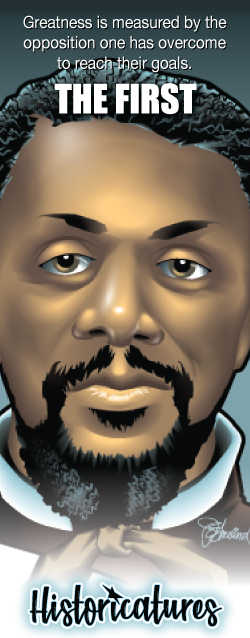
Jackie Ormes
(1911-1985) — The first female African American newspaper cartoonist
By Bob Hilson
Torchy Brown was not a traditional cartoon character. She didn’t have an outlandish look, superhuman powers or an over-the-top funny (or beneath-the bottom mundane) disposition.
Instead, Torchy was a determined, forward-thinking African-American woman who was on a path to succeed, and allowed little to stand in the way despite the perils of racism, deception and stereotypes before her.
The catalyst of cartoonist Jackie Ormes’ popular Torchy Brown comics of the 1930s, 40s and 50s, Torchy addressed issues that were relevant to the African-American community — and black women in particular.
Ormes’ creation not only defied expectations for black women but gave her readership a strong model for what the next powerful generation of young black women could become.
And she did it with flair. Torchy was quick with a biting one-liner or stoney glaze or dismissive “hee hee.” And, unlike most cartoon characters, Torchy was rarely the butt of failed humor.
“I have never liked dreamy little women who can’t hold their own,” Ormes once told an interviewer.
When Torchy Brownin Dixie to Harlem first appeared in the Pittsburgh Courier (a weekly African-American newspaper) in 1937, it marked the first time an independent black female character appeared in a nationally syndicated comic strip and it made Ormes the first black female cartoonist of a nationally syndicated comic strip.
Messages of Racial Uplift
Her work can be appreciated for its messages of racial uplift, made especially interesting because they were aimed at a wide readership in a family newspaper,” wrote Nancy Goldstein, in the book Jackie Ormes: The First African American Woman Cartoonist. “Ormes’ cartoons also vividly document the material culture of the postwar period and show the ways people dressed, how they furnished their homes, and their ambitions, pleasures and pastimes.”
Torchy Brown in Dixie to Harlem was a serious but whimsical depiction of a Mississippi teen who found fame and fortune singing and dancing in Harlem’s famed Cotton Club. Ormes’ characters were brimming with social commentary, from environmental concerns to racism and sexism. In one comic strip, Ormes’ depicts a black woman on a beach who is being sexually harassed. She slaps the man across the face with the caption: “I said leave me alone!”
One comic strip is perhaps most representative of Torchy’s persona:
As she boards a train bound for New York from a small town in Mississippi, she sees a sign with two arrows — one pointing to the train’s whites only section and the other to the train’s “colored” section. Torchy, who is educated and well-read, declares she can’t read and heads to the white section.
“Torchy was adventurous, we never saw that with an African American female figure,” said Mora Beauchamp-Byrd, an art history professor at the Oklahoma State University.
Born in Pittsburgh in 1911, Ormes graduated from high school in 1930. Her first job at the Pittsburgh Courier was as a proof reader, then an editor/reporter who covered an array of assignments, or as she put it, “running around town, looking into everything the law would allow, and writing about it.”
But her ambition was to be an illustrator – a published illustrator. Little did she know that her work would one day be published from coast-to-coast and she would be the only A frican-American female syndicated cartoonist of her lifetime. frican-American female syndicated cartoonist of her lifetime.
Ormes died in 1985. She was posthumously inducted into the National Association of Black Journalists Hall of Fame in 2014. |











